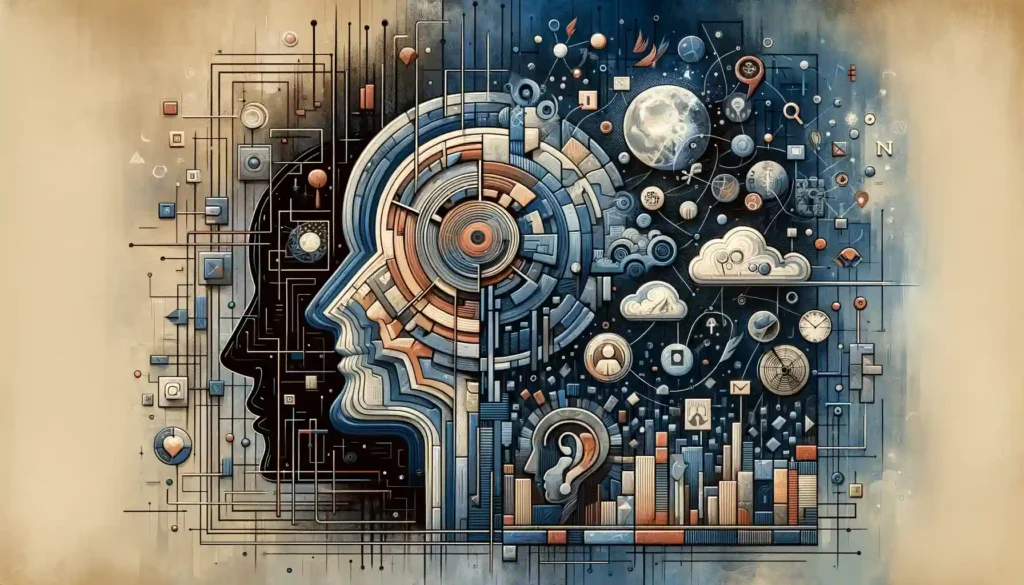In our increasingly global society, nonverbal communication is a crucial part of our daily interactions. Yet, it’s often hindered by various barriers, from cultural differences to personal discomfort. These barriers can greatly influence our social environment and the overall communication process.
Take, for instance, how diverse cultural norms shape nonverbal expressions and can lead to potential misinterpretations. A gesture considered polite in one culture might be seen as offensive in another. This cultural gap, along with language barriers, time zone differences, and accents, contributes to about 47% of communication breakdowns, according to a study by Kai et al., 2005.
Even in the digital age, technology-mediated communication presents unique challenges to nonverbal expression. As we navigate these complexities, it’s essential to identify and overcome these barriers for more effective intercultural communication.
Barriers to Nonverbal Communication
Understanding nonverbal communication can be a complex task due to myriad barriers that confront us daily. These hurdles can be as diverse as cultural differences or a simple lack of awareness about the importance of body language.
Cultural Differences
One of the most potent obstacles in comprehending nonverbal cues is cultural differences. Each culture endows its own particular set of significance to certain gestures, facial expressions, and body language. Misinterpretations can arise if these culturally specific nonverbal cues are not correctly understood. For example, while a thumb-up sign is generally considered positive in Western cultures, it’s viewed as offensive in some Middle Eastern countries.

In the words of international consensus scientists, cultural differences account for 45% of communication hindrances, making it undoubtedly a significant barrier in the way of effective nonverbal communication[^1^].
^1^
| Barrier | Percentage Inspired From Cultural Differences |
|---|---|
| Accent | 10% |
| Time Zone | 40% |
| Culture Differences | 45% |
| Language Barriers | 47% |
Kai et al. 2005
Disability or Impairment
Another crucial barrier to nonverbal communication is physical or sensory impairment. An individual with a physical disability might find it difficult to employ their body language effectively. Likewise, a person with a sensory impairment, such as visual or auditory, may struggle with receiving and interpreting nonverbal cues from others.
Lack of Awareness
At times, it’s not cultural or physical barriers but a sheer lack of awareness that hampers effective nonverbal communication. Many people are simply unaware of the impact their body language, facial expression, and tone of voice have on their communication effectiveness. They fail to realize that their crossed arms, slouched posture, or loud vocal tone could be conveying impressions far removed from their intended message.
In my continuous exploration of communication studies, I’ve found that improving nonverbal communication skills requires a level of self-awareness that many don’t possess. But with focus, anyone can cultivate this self-awareness and overcome this hurdle, making strides toward effective nonverbal communication.
Overcoming Barriers
Understanding the barriers to effective nonverbal communication is only the first step. The journey towards effective communication continues with proactive steps to overcome these barriers.

Education and Training
It’s been said that knowledge is power, and this rings especially true in the realm of communication. Misunderstandings often arise from a lack of awareness or understanding, making education and training a crucial tool for overcoming barriers.
Training programs about intercultural communication can prove particularly useful. This education offers individuals a greater understanding of the vast array of nonverbal cues prevalent in different cultures. These programs delve into a culture’s specific nonverbal language, helping participants comprehend and interpret these cues accurately.
However, the sphere of education and training isn’t confined to the exterior alone. It also encompasses a deep dive into one’s own perspective and biases. As highlighted earlier, perceptual barriers can distort the way we interpret the nonverbal signals of others. Self-awareness is vital to identify and address these biases.
Improving Cultural Competence
In an ever-evolving global society, cultural competence is a must-have skill. Understanding and respecting other cultures’ traditions, norms, and communication styles can significantly reduce misinterpretations. And like any other skill, it can be honed with practice.
One way to achieve this is by paying meticulous attention to nonverbal cues when communicating with others. This active observation can provide valuable insights into unspoken messages and emotions. A crucial note is to trust nonverbal communication over verbal communication when contradicting occurs.
Another actionable step is active listening. Active participation in conversations ensures you’re not just hearing the other person but truly understanding their point of view. It involves listening attentively to their words, noting their tone of voice, and observing their body language. This kind of deep, engaged listening can pave the way for more authentic, effective communication.
It’s evident that the journey to overcoming barriers in nonverbal communication is a multi-faceted one. With the right tools in our arsenal, we can navigate this complex landscape with greater ease and confidence, fostering healthier relationships and more productive interactions.
Barriers to Non Verbal Communication Examples
Let’s delve into the abundant realm of nonverbal communication complexities. I cannot stress enough how cultural differences significantly shape the interpretation and utilization of body language. As I’ve observed, these differences often breed confusion and misunderstanding, especially in an intercultural setting, where what is deemed appropriate in one culture might be entirely improper in another.
One study perfectly encapsulates this predicament. It exhibited how the context of body language dramatically influences an overall communication event. Failing to respect and understand these cultural variances can lead to a barrage of negative consequences, including embarrassment, aggression, prejudices, biases, and conflicts. Therefore, it’s essential to diligently study, analyze, and accept these cultural differences to reduce or limit communication barriers.
Concurrently, physical barriers often pop up, and they’re just as detrimental, if not more. Noise, message distortion, and technical difficulties are prime examples of how physical elements can impede effective communication. To give you an idea, consider a noisy room where understanding nonverbal gestures becomes increasingly challenging. Or perhaps the setup of an office, where the immense information overload makes it hard to perceive nonverbal cues accurately.
Alongside these, emotional or psychological barriers can inhibit proper communication. Mental blocks, arising from past experiences or ingrained biases, can distort your perception of someone’s actions tremendously. For instance, an individual’s psychological state might stop them from expressing their feelings truthfully, thus affecting the overall transparency and effectiveness of nonverbal communication.
In short, navigating nonverbal communication barriers isn’t merely about understanding gestures or facial expressions. It incorporates an in-depth appreciation of cultural nuances, an environment conducive for communication, and a sound emotional state — each playing its unique role in either facilitating or encumbering the communication process.
Barriers to Nonverbal Communication in Healthcare
In the world of healthcare, nonverbal communication often plays a vital role in the relationship between patients and providers. However, it’s not always smooth sailing. There’s a spectrum of challenges we must consider.
Physical barriers are a typical hindrance. The prevalence of masks and scrubs may conceal facial expressions—a key aspect of nonverbal communication. Similarly, personal protective equipment (PPE) such as gloves can limit tactile communication, often critical in conveying empathy and creating a comforting environment for patients.

Emotional and psychological barriers frequently underpin nonverbal communication in healthcare. Illness can induce strong emotions in patients, commandeering their ability to accurately interpret nonverbal cues or to express themselves nonverbally.
To make matters more complex, hierarchies within medical teams can also impact nonverbal communication. Expressions of dominance, anxiety, or deference can all shift the dynamics of interactions, leading to potential misinterpretation and misunderstanding.
Cultural Influences on Nonverbal Communication in Healthcare
When it comes to cultural influences, finite cross-cultural nuances can further complicate nonverbal communication in this realm. Different cultures have unique ways of expressing pain, discomfort, or distress nonverbally. Failing to recognize these variations can lead to inaccuracies in assessment and treatment.
Healthcare staff are often interacting with patients from diverse backgrounds, each with its own set of norms and expectations. Understandably, this can pose a challenge in accurately reading and responding to nonverbal cues.
It’s clear that the landscape of nonverbal communication in healthcare is fraught with potential challenges. Understanding these obstacles is the first step in effectively navigating them. Armed with this knowledge, we can better equip ourselves to break down these barriers and give patients the care and understanding they deserve.
Conclusion
It’s clear that nonverbal communication in healthcare is a complicated affair, challenged by physical, emotional, and psychological factors. The use of PPE can obscure vital facial cues, while emotional barriers and team hierarchies can create additional hurdles. Cultural differences add another layer of complexity, increasing the risk of misunderstandings. But it’s not all doom and gloom. By recognizing these challenges, healthcare providers can work towards improving their nonverbal communication skills, ensuring that patients get the empathetic and effective care they need. As we’ve seen, understanding is the first step to improvement. So let’s continue to learn, adapt and strive for better communication in healthcare.
